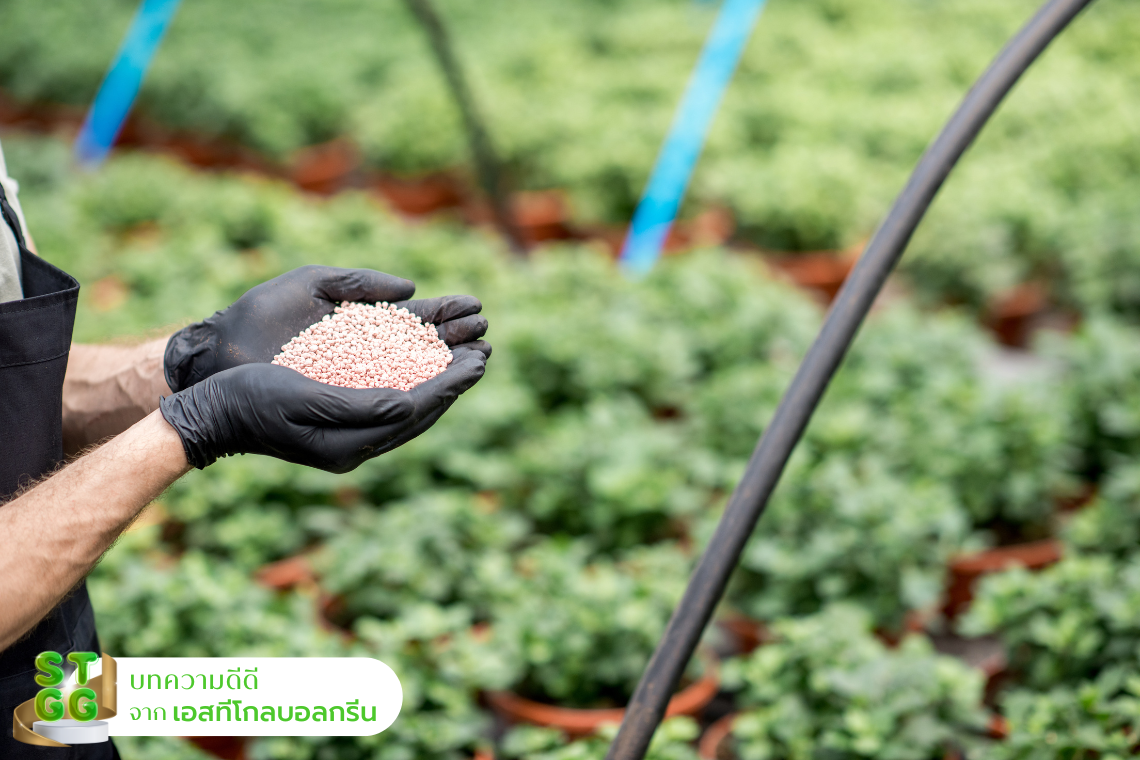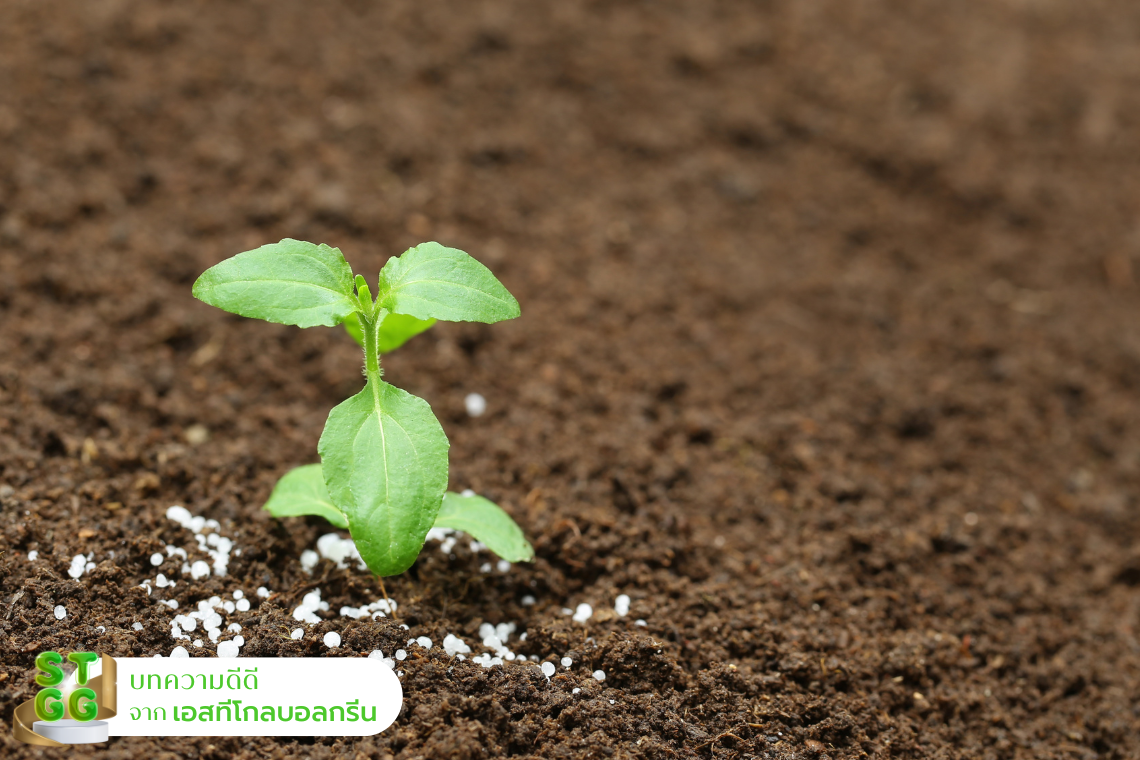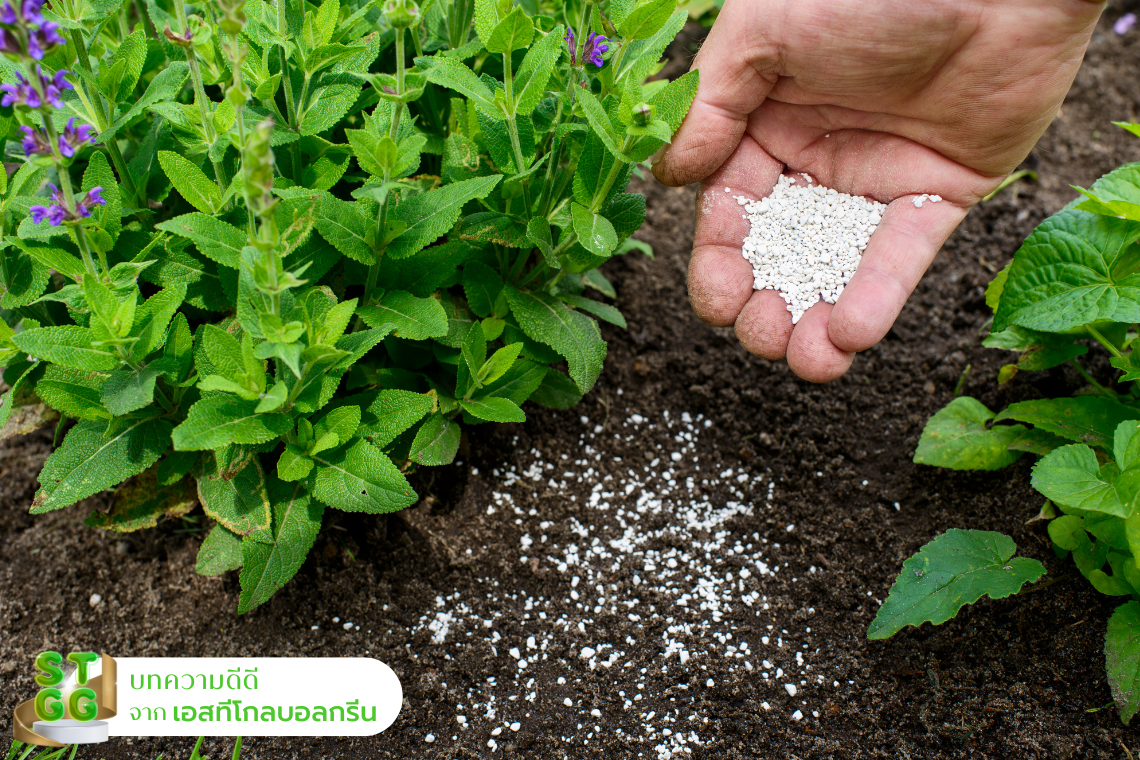Slow Release Fertilizer Why Use Organic Fertilizers?
618 Views |

Nowadays, you may hear it often. The development of slow release fertilizers for plants has become more expensive. While most farmers still prefer to use fast-dissolving chemical fertilizers. Causing some sellers to claim that it is a quick-dissolving fertilizer and sells more expensive as well This then becomes confusing as to what kind of fertilizer is really suitable. Today we will explain to each other.

First of all we have to understand. that plants need minerals in fertilizers to grow and produce crops And plants are living beings that should be continually fed with water and food like humans and animals. But in the past, humans used to use manure and compost to feed plants once in a while, probably because they thought that the soil was still fertile. or may not have much time to fertilize But in fact, those organic fertilizers will gradually decompose and release minerals and act for a long time already. (slow release), which corresponds to the rate at which plants gradually feed This is an important reason why fertilization is not needed as often.

But when synthetic chemical fertilizers are produced and used These fertilizers are usually high in mononutrients such as urea (46-0-0) and general N-P-K chemical fertilizers. It is a favorite among farmers. But farmers are still familiar with the method of fertilizing once in a while like in the past. especially in the era of rare labor therefore trying to reduce the frequency of fertilizing further While we want to increase crop yields. Many people therefore add a large amount of fertilizer to apply less. The hope is that the fertilizer will accumulate in the soil and the plants will gradually absorb it. but with the changing properties of the soil (Decreased organic matter) and with the properties of fast dissolving chemical fertilizers. Plants are often unable to eat. Overdose causes a lot of loss and toxicity to the soil and plants. So I have to come back to put less and more often as usual.

In fact, we can use quick-dissolving chemical fertilizers to get better results, which is not difficult. Just fertilize more often and in small amounts. There will be low loss and non-toxic. But the main problem lies in the labor of fertilizing and increasing costs. So we try to come up with an efficient method of fertilizing with lower labor costs.

Currently, there are efforts to slow down the dissolution of chemical fertilizers or control the release of controlled release fertilizers by techniques such as coating the surface of the fertilizer pellets with various polymers. It's like being wrapped in an egg shell. It's still not a very good principle. Because we're just slowing down the dissolution. When the shell was broken, minerals gushed out as quickly as before. may forget that fertilizing in the past (organic fertilizers) that do not need to be added often And can be put in a lot at a time without being toxic to the soil Because it contains organic substances that create mechanisms for water and mineral conservation (holding), balancing and anti-poisoning (buffer), mineral enhancement, chemical fertilizers (chelation), this is the way in which organic fertilizers must be added to the soil. Or organic matter is mixed together with chemical fertilizer by mixing and molding to form compound pellets. Organic particles with high CEC and holding capacity will cause the fertilizer minerals to be released. slow down as close to nature as possible This is another technique that will help solve the above problems.



